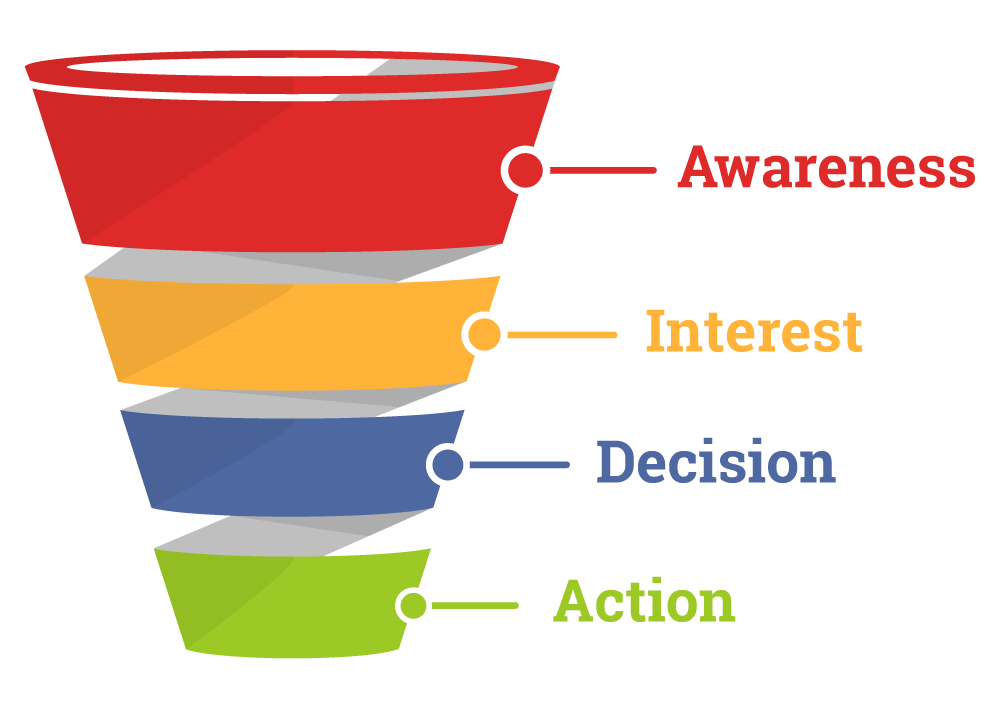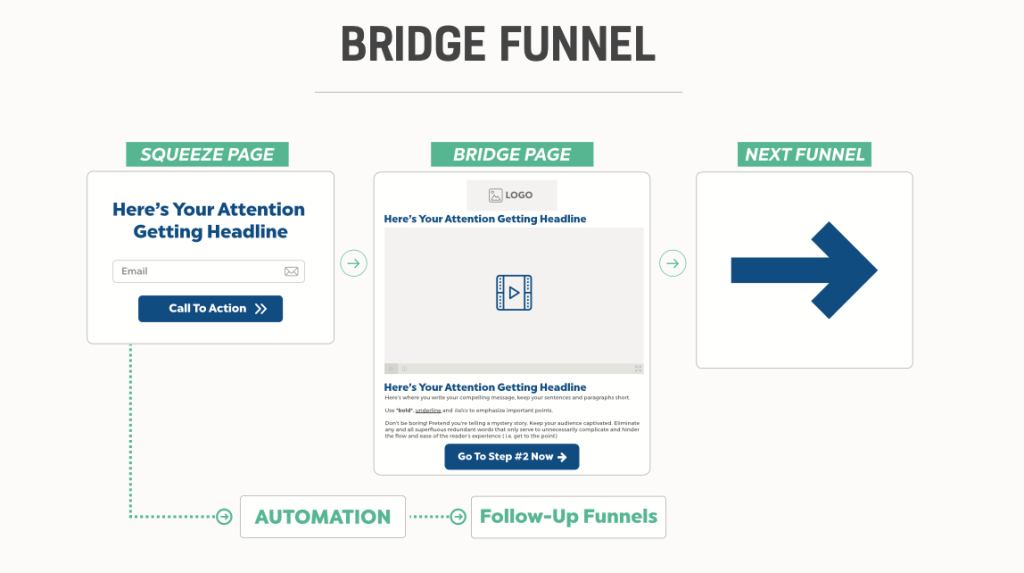In network marketing, attracting and converting leads into loyal customers and successful team members is the ultimate goal. To achieve this, one powerful tool stands out: the network marketing funnel. This blog will delve into what a network marketing funnel is, its stages, and how to use it to build a thriving network marketing business.
Build Your Network Marketing Funnel Today
What is a Network Marketing Funnel?
A network marketing funnel is a systematic process designed to guide potential leads through various stages until they become customers or distributors in your network marketing business. The funnel metaphor illustrates how a wide pool of prospects is gradually narrowed down to a smaller, more targeted group of engaged individuals ready to take action.
Network Marketing Funnel Stages

1. Awareness
At the top of the funnel, the goal is to attract a large number of prospects and make them aware of your products or business opportunities. This can be achieved through:
- Social Media Marketing: Utilizing platforms like Facebook, Instagram, and LinkedIn to reach a broad audience.
- Content Marketing: Creating valuable content such as blog posts, videos, and infographics that address the pain points and interests of your target audience.
- Advertising: Running paid ads on social media and search engines to boost visibility.
2. Interest
Once prospects are aware of your offering, the next step is to pique their interest. This involves:
- Lead Magnets: Offering free resources such as eBooks, webinars, or sample products in exchange for contact information.
- Email Marketing: Sending targeted email campaigns that provide valuable information and nurture relationships with prospects.
- Engaging Content: Sharing success stories, testimonials, and case studies that demonstrate the benefits of your products or business.
3. Evaluation
In this stage, prospects are considering whether your product or business opportunity is the right fit for them. Strategies include:
- Detailed Information: Providing comprehensive product descriptions, business plans, and compensation structures.
- Live Demonstrations: Hosting live webinars or virtual meetings to showcase products and answer questions.
- One-on-One Consultations: Offering personalized consultations to address individual concerns and provide tailored solutions.
4. Decision
The decision stage is where prospects are ready to make a commitment. Your role is to facilitate this process through:
- Clear Calls-to-Action: Making it easy for prospects to take the next step, whether it’s making a purchase or joining your team.
- Limited-Time Offers: Creating a sense of urgency with special promotions or limited-time discounts.
- Onboarding Support: Ensuring a smooth transition by offering training, resources, and support to new customers or team members.
5. Retention
After converting prospects into customers or team members, the focus shifts to retention. This involves:
- Ongoing Support: Providing continuous training, resources, and support to help them succeed.
- Community Building: Fostering a sense of community through online groups, events, and regular communication.
- Loyalty Programs: Offering incentives for repeat purchases and referrals to keep customers engaged and motivated.
Build Your Network Marketing Funnel Today
Why Should You Use a Network Marketing Funnel

Using a network marketing funnel is essential for streamlining and optimizing the process of attracting, nurturing, and converting prospects into loyal customers and committed team members.
Structured Process
Firstly, one of the primary reasons for utilizing a network marketing funnel is its ability to systematically guide potential leads through a structured journey, enhancing their engagement and increasing the likelihood of conversion.
By breaking down the journey into distinct stages—awareness, interest, evaluation, decision, and retention—you can tailor your marketing strategies to address the specific needs and concerns of prospects at each stage. This targeted approach not only improves the efficiency of your marketing efforts but also ensures that prospects receive relevant information and support, which can significantly boost their confidence in your products or business opportunity.
Automation and Scalability
Another compelling reason to use a network marketing funnel is its capacity for automation and scalability. Leveraging marketing automation tools, you can efficiently manage and nurture a large number of prospects without compromising the quality of engagement.
Besides, automated email campaigns, social media scheduling, and customer relationship management (CRM) systems enable you to deliver personalized content and follow-ups at the right time, keeping prospects engaged and informed throughout their journey. This scalability is particularly crucial in network marketing, where building a large and effective network of customers and distributors is key to success.
By automating repetitive tasks and streamlining communication, you can focus more on building relationships and providing value, which are the core tenets of network marketing.
Campaign Optimization
Lastly, the data-driven insights gained from a network marketing funnel are invaluable for continuous improvement and optimization. By tracking key performance metrics at each stage of the funnel—such as conversion rates, click-through rates, and customer acquisition costs—you can then identify what strategies are working and where there might be bottlenecks or drop-offs.
This analytical approach allows you to make informed decisions and adjustments, ensuring that your marketing efforts are continually refined and more effective. Additionally, the insights gathered can help in understanding the preferences and behaviors of your target audience, enabling you to create more targeted and compelling content and offers. Overall, the systematic, scalable, and data-driven nature of a network marketing funnel makes it an indispensable tool for building a successful network marketing business.
What is a Lead Magnet in Network Marketing Funnel

A lead magnet is a valuable resource offered for free in exchange for contact information, typically an email address, from potential customers or clients. In addition, the primary goal of a lead magnet is to attract and capture leads by providing them with something useful that addresses their needs or interests, thereby starting a relationship that can lead to future business.
Key Characteristics of an Effective Lead Magnet
- Specific Value: It should offer something that directly addresses a pain point or interest of the target audience.
- Instant Gratification: The lead magnet should provide immediate value, ideally something that the recipient can use or benefit from right away.
- Relevance: It must be relevant to both the audience and the business’s products or services.
- Easy to Consume: It should be easy to access and consume, such as a downloadable PDF, a short video, or an email series.
- High Quality: The content should be well-crafted and professional, reflecting the value and credibility of the business.
Examples of Lead Magnets
- Ebooks and Guides: In-depth resources on a specific topic of interest.
- Checklists and Cheat Sheets: Quick, actionable items that can be easily implemented.
- Webinars and Workshops: Live or recorded sessions providing valuable insights or training.
- Free Trials or Samples: Limited-time access to a product or service.
- Discounts or Coupons: Special offers to entice new customers.
- Quizzes and Assessments: Interactive tools that provide personalized results or insights.
Network Marketing Funnel Lead Magnets
For network marketing, lead magnets can be particularly effective in attracting potential business partners or customers. Here are some ideas tailored for network marketing:
- Educational Content: Ebooks, guides, or video series on topics such as starting a network marketing business, overcoming common challenges, or strategies for success.
- Example: “10 Steps to Building a Successful Network Marketing Business”
- Success Stories and Case Studies: Real-life examples of individuals who have achieved significant success within the network marketing model.
- Example: “How I Built a Six-Figure Network Marketing Business in One Year”
- Exclusive Access to Training: Free webinars or workshops conducted by successful network marketers offering tips, strategies, and insights.
- Example: “Join Our Free Webinar: How to Triple Your Network Marketing Income”
- Templates and Tools: Resources like email scripts, social media templates, or planning calendars tailored for network marketers.
- Example: “Download Our Ultimate Network Marketing Prospecting Email Templates”
- Interactive Assessments: Quizzes or assessments that help potential leads determine their readiness for network marketing or identify their strengths.
- Example: “Are You Ready to Be a Network Marketing Pro? Take Our Quiz!”
- Free Samples or Trials: Limited-time access to the products or services being marketed, allowing potential leads to experience the benefits firsthand.
- Example: “Get a Free Sample of Our Top-Selling Health Supplement”
By providing valuable and relevant lead magnets, network marketers can effectively attract and engage potential leads, nurturing them into active participants in their network.
Build Your Network Marketing Funnel Today
How to Use a Network Marketing Funnel Effectively

Building a network marketing funnel on ClickFunnels involves several steps, from planning and designing the funnel to setting up automation and tracking. Here is a detailed guide to help you create an effective network marketing funnel:
Step 1: Plan Your Network Marketing Funnel
Before diving into the technical aspects of building your funnel on ClickFunnels, it’s crucial to have a solid plan. Firstly, start by identifying the primary goal of your funnel. In network marketing, this might also include recruiting new distributors, selling products, or generating qualified leads. Clearly defining your objective will guide the design and content of your funnel.
Then, define your target audience by considering their demographics, interests, pain points, and motivations. Understanding your audience helps in creating an offer that resonates with them. Your offer could also be a free ebook, a webinar, a sample product, or a discount – something valuable enough to entice them to provide their contact information.
A well-thought-out plan lays the foundation for an effective and successful funnel.
Step 2: Create a ClickFunnels Account
If you don’t already have a ClickFunnels account, the first step is to sign up for one. ClickFunnels offers a 14-day free trial, which provides a great opportunity to familiarize yourself with the platform and start building your funnel.
You can visit the ClickFunnels website, fill out the registration form, and create your account. Once you have an account, you can access all the tools and templates that ClickFunnels provides, making it easier to design and launch your network marketing funnel.

Step 3: Choose a Funnel Template
ClickFunnels offers a variety of pre-built templates tailored to different types of funnels. Firstly, log in to your ClickFunnels account and navigate to the “Funnels” section in the top navigation menu. Then, click on “Build Funnel” and choose the type of funnel that best suits your needs.
For network marketing, options like “Lead Magnet Funnel” for capturing leads or “Sales Funnel” for selling products are ideal. In addition, you can browse through the available templates, preview them, and select the one that aligns with your goals. These templates provide a structured starting point, saving you time and ensuring a professional look.
Step 4: Customize Your Network Marketing Funnel Pages
Each funnel consists of several pages, such as a landing page, a thank-you page, and possibly a sales page. Customize these pages to align with your brand and offer.
Firstly, start with the landing page by creating a compelling headline that grabs attention and a subheadline that clearly explains the value proposition. Then, include an opt-in form to capture the leads’ contact information, asking for essential details only. You can enhance the page with relevant visuals like images or videos to make it more engaging. For the thank-you page, provide a confirmation message and outline the next steps.
Besides, you can also use this page to offer an additional product or service. If you have a sales page, provide detailed product information, include testimonials, and have a clear call-to-action. Customize each page ensures a cohesive and persuasive user experience.
Step 5: Set Up Email Automation
Automating your follow-up emails is crucial for nurturing leads and maintaining engagement. Firstly, start by integrating your email service provider with ClickFunnels. Popular options include GetResponse, MailChimp, AWeber, and Actionetics, ClickFunnels’ own email marketing tool.
Once integrated, create a series of follow-up emails designed to nurture your leads. These emails should provide value, share success stories, and encourage further engagement with your offer.
You can also configure triggers within ClickFunnels to ensure that when a lead opts in, they automatically enter your email sequence. This automation helps in building a relationship with your leads, moving them closer to conversion.
Step 6: Configure Payment Processing
If your network marketing funnel involves selling products, setting up payment processing is essential. Start by integrating a payment gateway such as Stripe or PayPal with your ClickFunnels account.
Then, navigate to the payment settings and follow the prompts to connect your preferred gateway. Once connected, add product details on the sales page, including descriptions, pricing, and purchase buttons linked to your payment gateway. This setup ensures a seamless transaction process, providing a smooth experience for your customers and helping you capture sales effectively.
Step 7: Test Your Network Marketing Funnel
Before launching your funnel, it’s vital to test each component to ensure everything works as intended. Begin by opting in through the landing page to verify that lead capture is functioning correctly.
Then, check that all follow-up emails are sent as scheduled and that the content is accurate and engaging. If your funnel includes a sales component, perform a test purchase to confirm that the payment process is seamless and error-free. Testing helps identify and fix any issues, ensuring that your funnel operates smoothly and provides a positive user experience when it goes live.
Step 8: Launch and Promote Your Network Marketing Funnel
With everything set up and tested, it’s time to launch your funnel and start driving traffic to it. Promote your funnel through various channels, such as social media platforms like Facebook, Instagram, and LinkedIn.
You may use targeted paid advertising to reach your ideal audience, leveraging tools like Facebook Ads and Google Ads. Additionally, tap into your existing network and encourage them to share your funnel with others who might be interested. Effective promotion is key to attracting leads and achieving your network marketing goals.
Step 9: Monitor and Optimize
Once your funnel is live, ongoing monitoring and optimization are essential for sustained success. Use ClickFunnels’ analytics tools to track key performance metrics such as conversion rates, bounce rates, and average order value. Conduct A/B testing on different elements like headlines, images, and CTAs to determine what works best. Based on the data, make informed adjustments to improve the funnel’s performance. Continuous optimization ensures that your funnel remains effective, helping you achieve better results and grow your network marketing business.
Final Thoughts: How to Create a High-Converting Network Marketing Funnel
Creating a high-converting network marketing funnel is not just about following a set of steps—it’s about understanding your audience, delivering value, and building lasting relationships. As you embark on this journey, remember that each stage of your funnel plays a critical role in turning prospects into loyal customers and dedicated team members.
In conclusion, crafting a high-converting network marketing funnel requires a blend of strategic planning, continuous optimization, and heartfelt relationship-building. By mastering each stage of the funnel and staying committed to delivering value and authenticity, you can create a thriving network marketing business that not only achieves immediate success but also stands the test of time. Here’s to your success and the many loyal customers and team members you’ll attract along the way!


